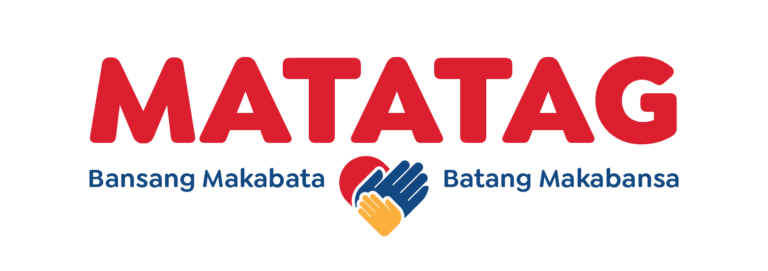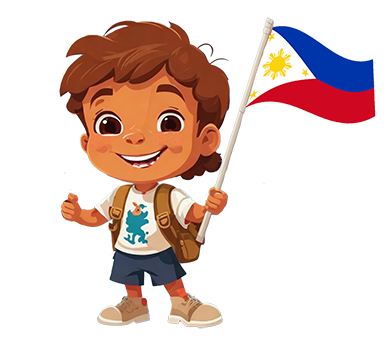
Download the MATATAG Language Curriculum Here
This Shaping Paper offers a comprehensive examination of the K to 12 language education curricula. It encompasses several vital aspects, including the background and rationale for language learning, key design principles, curriculum structure, pedagogy, assessment, and essential considerations in developing these language curricula.
Background and Rationale for Language Learning
The language curricula within the K to 12 framework prioritize the principles of first language-based multilingual education, emphasizing the significance of mastering the learners’ first language (L1) and additional languages like Filipino and English. Proficiency in these languages enables effective communication and cultivates an understanding of the surrounding world.
Learning languages equips students with the ability to broaden their horizons and engage in meaningful communication. It aids in comprehension, interpretation, and the creation of meaning within relationships and cultural contexts. Furthermore, language learning enhances thinking skills, expression, appreciation, reflection, and societal participation.
Moreover, language education contributes to social, economic, and international development, enriching linguistic and cultural resources. For Indigenous communities, it fosters a deeper connection to their cultural heritage and knowledge systems. Similarly, it promotes the full inclusion of marginalized communities, such as the Filipino Deaf community.
Specifically, language learning:
- Develops communication skills and expands literacy abilities.
- Enhances understanding of language, culture, and communication processes.
- Cultivates an appreciation for diversity and open-mindedness.
- Helps learners comprehend how language and culture shape their worldview and identity.
- Augments creative and critical thinking, as well as analytical capacity.
The Design of the Languages Curricula
Languages as Learning Areas in the K to 12 Curriculum
The development of language curricula acknowledges the pivotal role of the first language (L1) as a foundational literacy resource. Proficiency in the L1 provides a strong basis for subsequent education and literacy development. Literacy in the L1 not only improves learning outcomes in both the L1 and the second language (L2) but also enhances cognitive abilities. Research supports the notion that a strong L1 foundation leads to better educational outcomes.
The Languages Shaping Paper guides the development of language learning areas, encompassing Mother Tongue, Filipino, and English. It introduces two novel learning areas in Grade 1:
The Language learning area places emphasis on oral language development in the learner’s first language, serving as a bridge to literacy and learning in other subjects. It recognizes the rich linguistic diversity in the Philippines, including sign and visual languages and Indigenous languages.
The Reading and Literacy learning area focuses on foundational reading skills essential for early literacy, such as phonemic awareness, decoding, and sight word recognition, fostering proficient reading in the first language.
The revised curriculum restructures language offerings in the K to 10 Curriculum, with Language and Reading and Literacy areas offered in Grade 1, followed by Filipino and English in Grade 2. This sequential approach builds a strong foundation in the first language, facilitating the transition to cognitive and academic language proficiency in Filipino and English.
The Multilingual Education Model, draws inspiration from Cummins’ concept of linguistic interdependence and common underlying proficiency. It underscores how skills and metalinguistic knowledge acquired in one language can benefit the learning of another language.
The Aims and Goals of the Curriculum
Collectively, the language curricula aim to nurture literate, communicatively competent, and culturally aware Filipino learners. The curriculum equips learners with the ability to use language effectively, think critically, and communicate proficiently in diverse social contexts. Consequently, they become valuable contributors to their communities and society, embodying a deep sense of cultural identity.
The Languages Curricula Framework, highlights the overarching goals of the subject offerings:
Literacy encompasses the ability to engage with printed and written materials, including digital and multimedia texts, within various contexts. It involves actively using language to acquire, construct, reconstruct, and communicate meaning.
Communicative competence synthesizes knowledge of grammatical, sociolinguistic, discourse, and strategic competencies in a language.
Cultural identity fosters pride in belonging to a cultural group that is acknowledged and appreciated by other cultural groups. This sense of belonging contributes to self-concept, self-esteem, and equal standing in society.
To achieve these goals, the curriculum incorporates pedagogical strategies, learning resources, and assessments informed by language acquisition theories and cultural context. Contextualization, through the inclusion of local culture, plays a pivotal role in the effective implementation and assessment of the curriculum.













